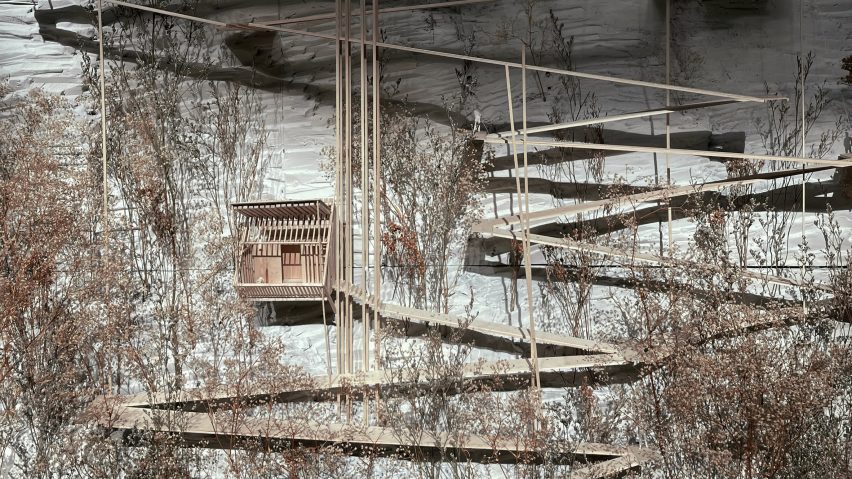
Ten architecture projects by students at Washington University in St Louis
Dezeen School Shows: a sustainable housing scheme designed to accommodate unconventional family structures is included in Dezeen's latest school show by students at Washington University in St Louis.
Also featured is a housing scheme that was designed in collaboration with dancers to explore movement, light and form, and a renovation of the Columbia Building in St Louis, USA.
Washington University in St Louis
Institution: Washington University in St Louis
School: Sam Fox School of Design and Visual Arts
Courses: Master of Architecture, Master of Landscape Architecture and Master of Urban Design
Tutors: Chairs Mónica Rivera, Derek Hoeferlin and Linda Samuels
School statement:
"Architects, landscape architects and urban designers are key creative thinkers in decoding and tackling some of the most critical challenges of our age.
"From the impacts of climate change on communities around the world to the need for new housing models to accommodate a changing population, to the rise of artificial intelligence, students in the Graduate School of Architecture and Urban Design are exposed to design challenges from micro to macro scales across a wide variety of cultures, climates and contexts.
"Our faculty of leading scholars, notable practitioners, global guests and expert educators take our responsibilities as social and spatial stewards seriously – for both human and non-human inhabitants – locally in our home of St Louis, USA, and globally as citizens of the design world.
"Our graduate programs in architecture, landscape architecture and urban design emphasise strategic design thinking, careful craft and thoughtful integration of technology as well as independent and critical positions on social and environmental justice.
"The eight-to-one student-to-faculty ratio encourages a culture of meaningful conversations around the design disciplines and professional opportunities.
"Students in Washington University's Sam Fox School also have the opportunity to expand their practice by pairing any two programmes between architecture, landscape architecture and urban design.
"Master of Architecture students can also pursue a joint master's degree in business administration, computer science and engineering, construction management, social work or public health.
"Our NAAB-accredited Master of Architecture programme, LAAB-accredited Master of Landscape Architecture programme, and Master of Urban Design programme are all STEM-designated."
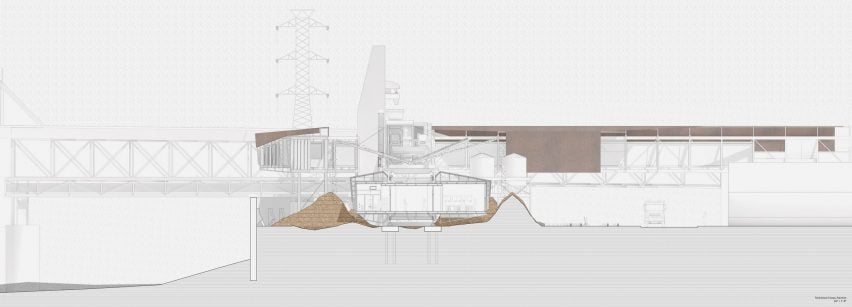
Reshaped Grounds: Soil Remediation Prototype by Justin Stanley
"Reshaped Grounds: Soil Remediation Prototype investigates the future role of post-industrial wastelands found throughout the built landscape of East St Louis, US.
"Littered with ruin and decay, the chosen site has been polluted as the railroad industry of the past has vanished. An incubator for reuse and spatial reinterpretation – located on Illinois' riverfront – responds to this landscape.
"It proposes soil remediation as the ecological and programmatic initiator for the formation of an architectural response that activates a new symbolic dialogue with the city's riverscape."
Student: Justin Stanley
Course: 616 Degree Project, Master of Architecture
Tutor: Chandler Ahrens
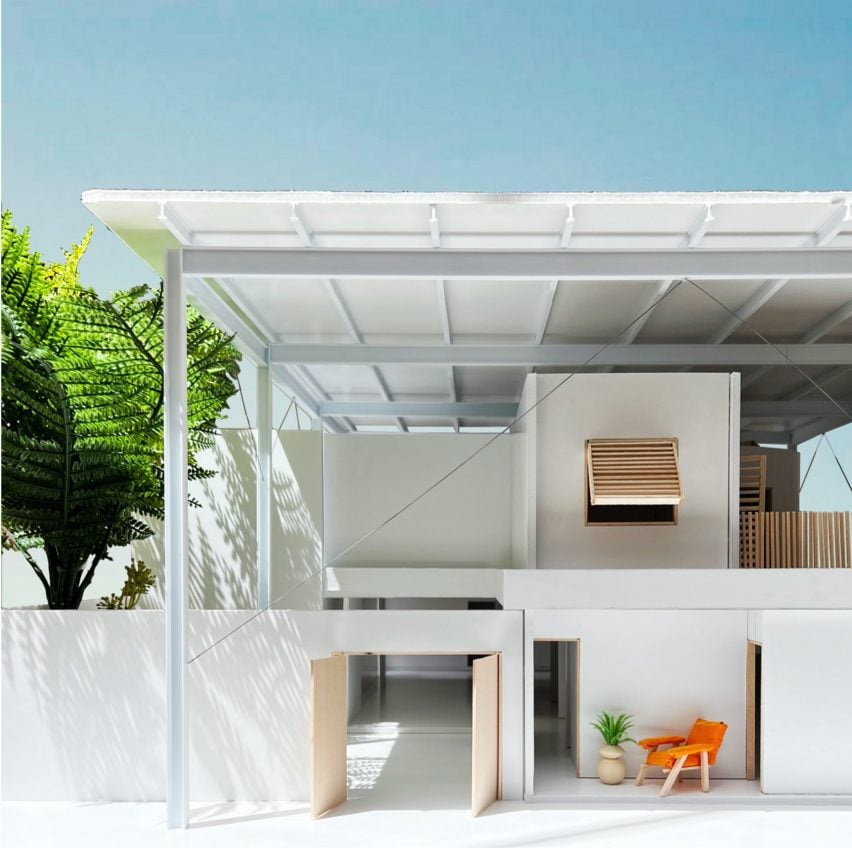
ARCH 611: Calibrating Latencies by Toritcha Coulibaly
"Understanding the need to reuse and not demolish. How can existing ordinary structures in San Juan, Puerto Rico, with no spatial, material or emotional attributes be reutilised and transformed into socially meaningful and energy-independent places?
"How – through the practice of latency – can a floor plan be calibrated, without alterations, to accommodate multiple uses and changing programmes, not only housing?
"How might new assemblages and superimpositions reconcile, physically and culturally, different colonial legacies?
"Calibrating Latencies follows a critique of Levittown Puerto Rico houses' material and climatic inadequacy as well as its obsolete layout for sameness and individuality.
"This project proposes a strategic addition to bring new uses, increase density and, when replicated, transform the existing suburban block into an open-ended neighbourhood."
Student: Toritcha Coulibaly
Course: Architectural Design VII, Master of Architecture
Tutor: Mónica Rivera
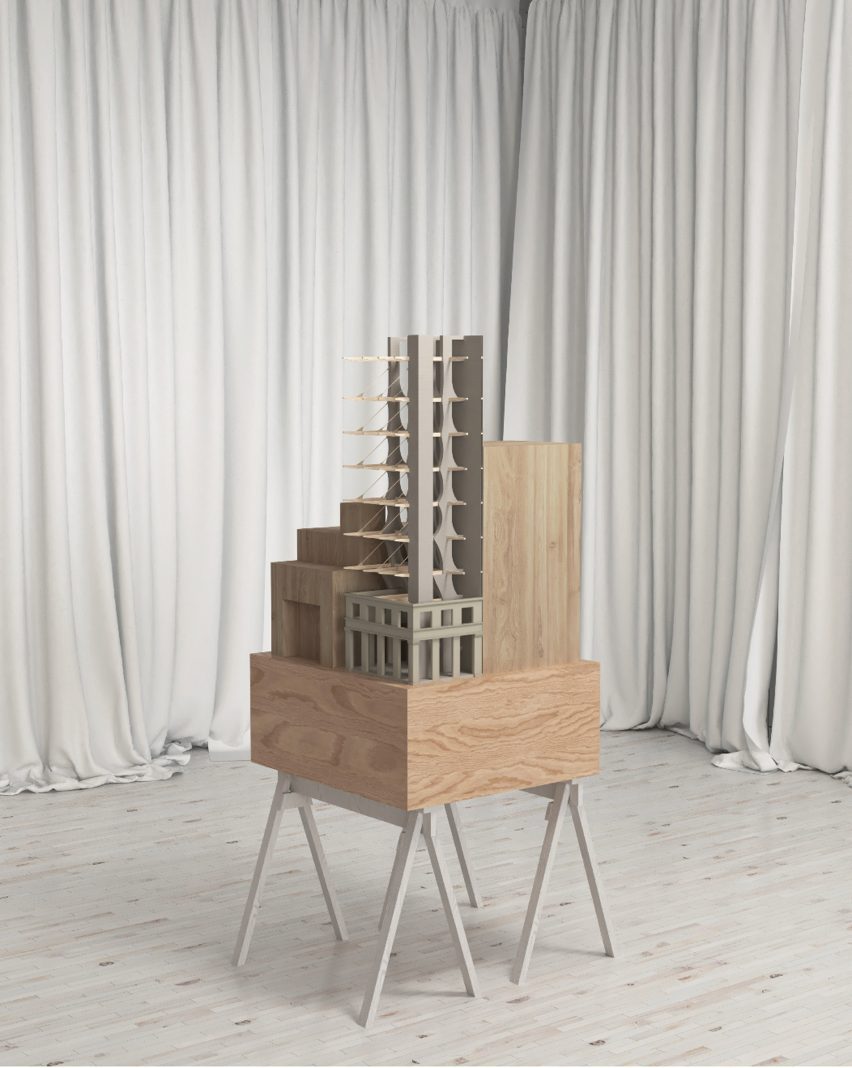
Degree Project by Yi Wang
"Yi Wang's project creates an adaptable office solution based on different tasks and collaboration modes. The site is Columbia Building in downtown St Louis, US, which was truncated to two floors in 1976.
"A ghost of the original building recalls the memory of the golden age of St Louis."
Student: Yi Wang
Course: 616 Degree Project, Master of Architecture
Tutor: Adrian Luchini
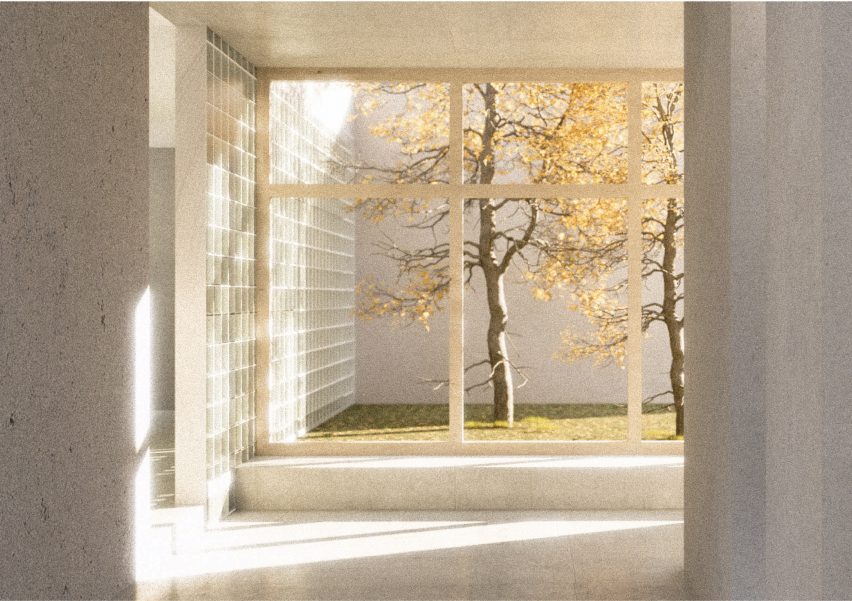
ARCH 611: Dance Combinations by Karen Ramos
"This studio investigated the communication between architecture and allied arts through exploratory exercises. Architecture is a discipline that forms spatial conditions and choreographs human movement.
"Its origins of influence arrive through creative processes including drawing, writing, modelling and speculation.
"Among other visionary forces, students collaborated with dancers, studying the translation of movement, light and form as an act of reading through drawing.
"The studio studied the site of On Olive in St Louis, US, to propose a series of single-family housing schemes opposite the Tatiana Bilbao Estudio orchestration.
"Ramos's project negotiates with adjacent works and collaborates with dance students to create a set of scenarios that are exemplary of a client experience.
"The project considers architectural elements, such as enclosures, stairs, balconies and furniture, in concert with the landscape and urban context."
Student: Karen Ramos
Course: Architectural Design VII, Master of Architecture
Tutor: Heather Woofter
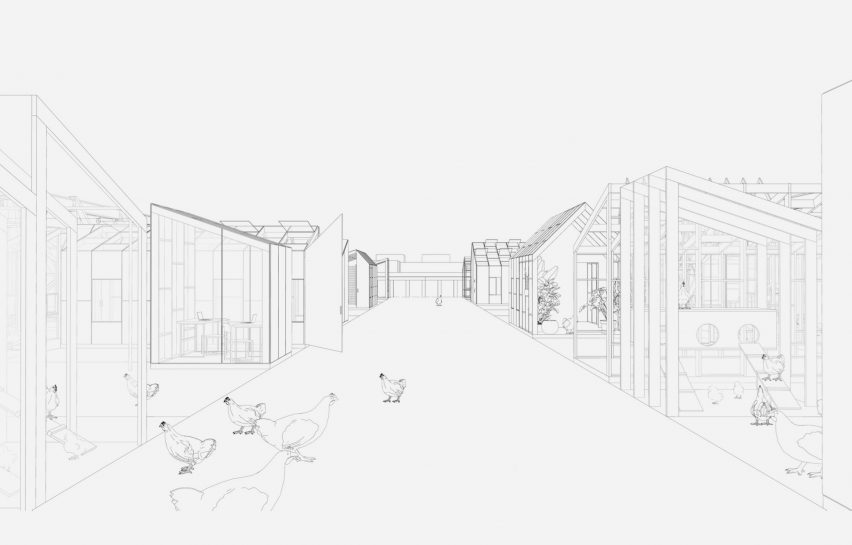
ARCH 611: Plug-In – ClipOn by Baili Null
"Hyper-local is both a response and a challenge to the 2019 New York City Climate Mobilisation Act. While many people see it as an ambitious plan from NYC, hyper-local argues that it is not nearly enough.
"Our consumption outpaces our available resources and many vital resources for life are treated as commodity. This includes food, water, energy, education and space.
"What if the Climate Mobilisation Act provided an opening for the rooftop to produce these resources as common goods for all organisms?
"How can hyper-local infrastructure on rooftops make NYC buildings more self-sufficient while benefitting the public, the environment and the building occupants below?
"In this scenario, can collective ownership and shared dependence provide the necessary stewardship to maintain these systems?"
Student: Baili Null
Course: Architectural Design VII, Master of Architecture
Tutor: Petra Kempf
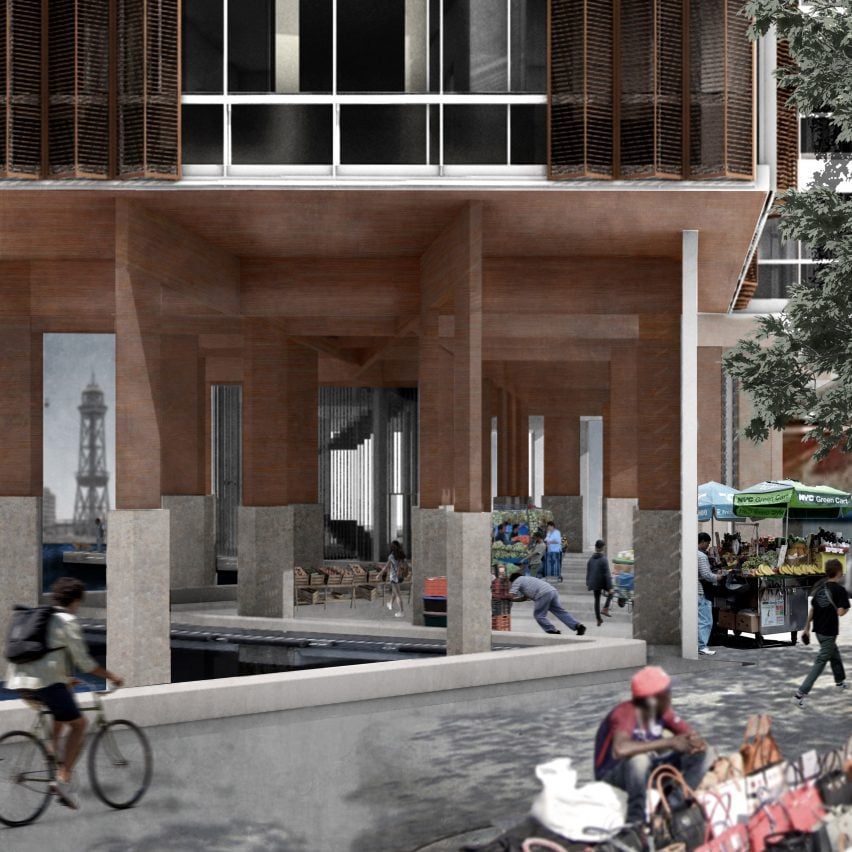
ARCH 419: Barcelona by Antonia Baños
"The 419 International Housing studio aims to deepen the students' understanding of the importance of the climatic, social and cultural dimensions of a specific city in relation to forms of dwelling collectively in an urban setting.
"Students develop housing proposals that not only engage with the particularities of each site but also challenge traditional ways of living to respond to new family structures and to an increasing interest and need for collaborative living.
"This proposal for a housing development in La Barceloneta is an investigation of how traditional Barcelona dwelling strategies could be incorporated in a design aimed to promote comfort within the user's daily life.
"The design evolved to optimise sunlight, natural heating and cooling strategies, circulation and flexibility while embracing its surrounding context and providing the space for community engagement."
Student: Antonia Baños
Course: 419 International Housing Studio, Master of Architecture
Tutor: Emiliano Lopez
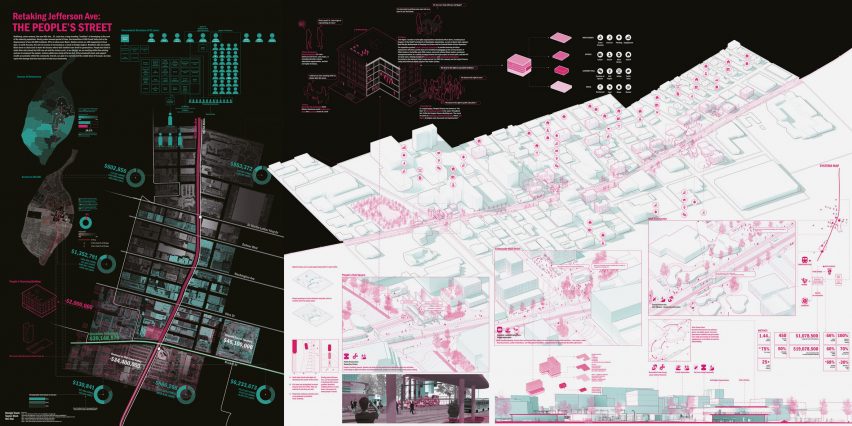
Retaking Jefferson Ave: The People's Street by Wei Hui and Suyue Shen
"During the urban renewal period of the 1960s, the demolition of Mill Creek Valley in St Louis resulted in the displacement of over 20,000 residents – 95 per cent of whom were black – along with the demolition of thousands of homes and black-owned businesses. Similar events are still happening today.
"In this design, Hui and Shen find inspiration from the historic People's Building, a grand structure in the former Mill Creek Valley that is now demolished but operated as a hub for Black political and economic activity.
"The new design, which overlaps the site, leverages systems of power, economics and transportation to restore public life and democratic voice along and within Jefferson Avenue.
"The strategies support wealth accumulation by providing a wide range of housing typologies and sizes, opportunities for formal and informal businesses of various temporal lengths, and public amenities and spaces for gathering and community building.
"Overall, the project's goal is not only to tell the untold story of St Louis by re-establishing the footprint and story of the People's Building, but also to repair the damage that has been done to the local community by dispersing its historical programme to the site in new ways."
Students: Wei Hui and Suyue Shen
Course: 711 Elements of Urban Design, Master of Urban Design
Tutor: Linda Samuels
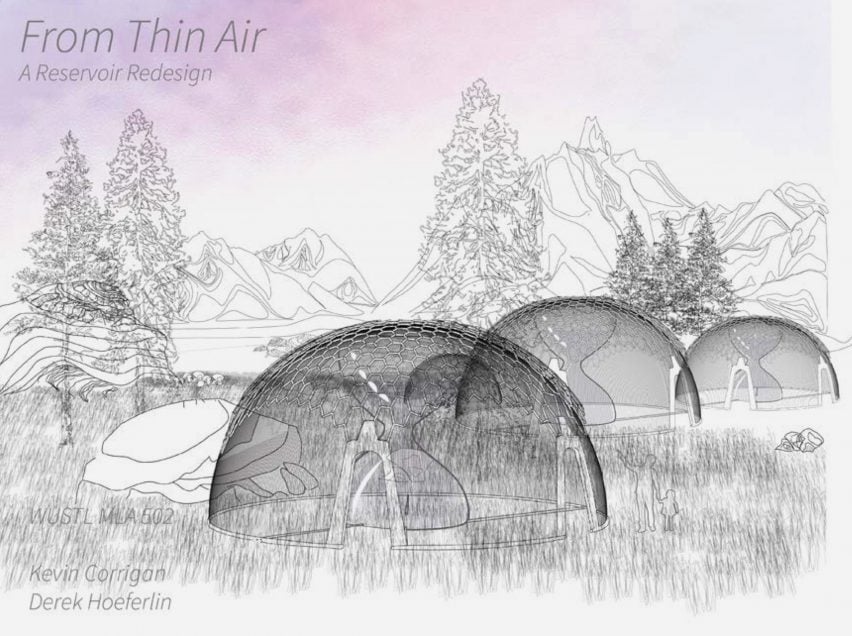
From Thin Air by Kevin Corrigan
"The Land 501 studio introduces students to the importance of situating their studies and future disciplinary practice within a multi-scaled understanding of watersheds, emphasising water as the primary component that drives all other aspects of design.
"Corrigan looked at the reservoir system as it relates to persistent drought in the southwest – From Thin Air introduces a nascent design for water storage inspired by ancient atmospheric water capturing techniques at a flexible scale.
"Mountains force air to rise, creating moisture. High altitude peaks have sub-freezing temperatures much of the year – herein lies opportunity.
"The designed system is deployed onto these slopes, capturing moisture from clouds without using energy. The water can then be used or stored in myriad ways."
Student: Kevin Corrigan
Course: Landscape Architecture Design Studio III, Master of Landscape Architecture
Tutors: Derek Hoeferlin and Kotchakorn Voraakhom
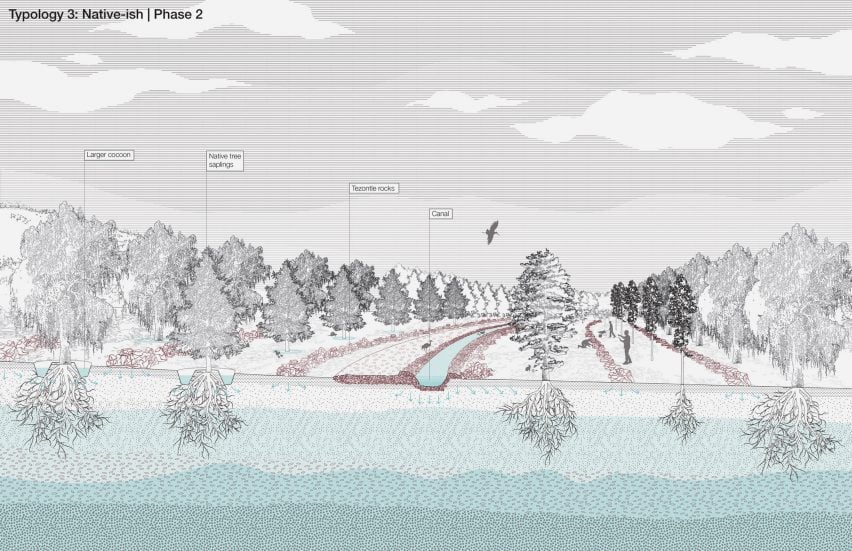
The Road to Recovery by Kaiti Burger and Chenyue Wang
"The Road to Recovery is a response to Mexico City's intertwined ecological crises that have emerged from significant and irreversible alteration to the region's hydrology, topography and ecology.
"Our proposal reinterprets mining roads as watersheds in order to regenerate Mexico City's forests. These forests are crucial for infiltrating water into Mexico City's aquifer, which currently provides 70 per cent of the city's drinking water.
"By regenerating the degraded soils of Mexico City's steep basin walls, we can begin to imagine a different urban future for the city through its lost oak and pine forests."
Students: Kaiti Burger and Chenyue Wang
Course: Landscape Architecture Design Studio VI, Master of Landscape Architecture
Tutor: Seth Denizen
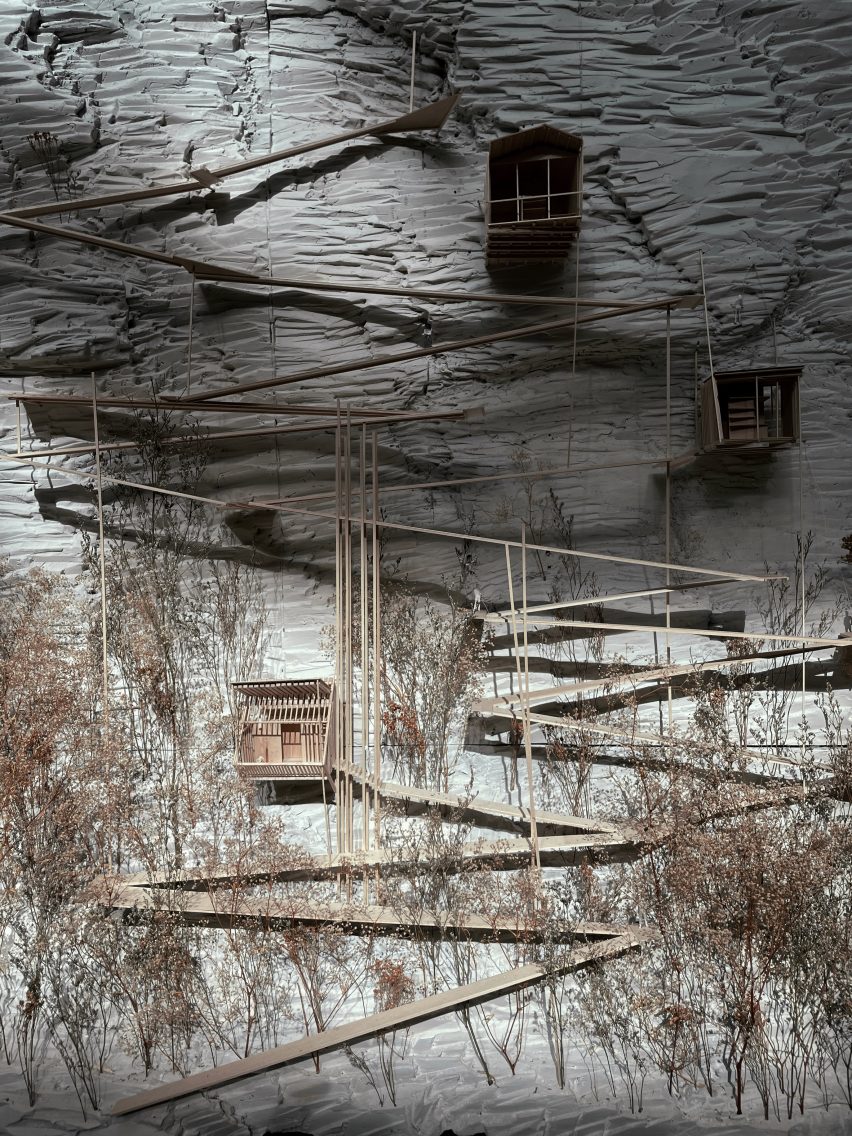
Weathering in Place: Limestone Bluff by Monica Mulica
"This project is located in Dupo, Illinois, USA, along the limestone bluffs – it is a rest area that can accommodate truckers, campers, cars and overnight lodgers with necessary services.
"Since the project is located between two limestone quarries, it references the industrial structure and atmosphere. However, it takes a more gentle and less intrusive approach to build on the site.
"The site is historically a marker for navigation and rest due to being adjacent to Falling Springs, a 50-foot waterfall. The site's picturesque quality and prominent features have drawn people to experience the limestone bluff.
"The project considers the different characteristics of limestone in construction and in the atmosphere. Relating to history, the rest area approach includes creating a more enjoyable, sustainable and healthy environment for truckers.
"Weathering in Place includes orchards and gardens that serve the market and cafe as well as limestone gravel trails that continue up the bluff, allowing one to stretch their legs while interacting with limestone."
Student: Monica Mulica
Course: 616 Degree Project, Master of Architecture
Tutor: Julie E Bauer
Partnership content
This school show is a partnership between Dezeen and Washington University in St Louis. Find out more about Dezeen partnership content here.